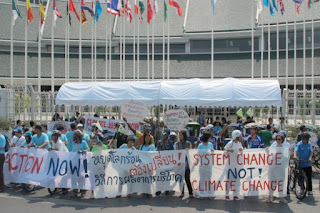
European researchers are developing a new microprocessor for use in data centres that uses 10% of the energy that chips currently consume.
But this saving is cancelled out by the fact that accessing data on the Cloud uses ten times more energy than doing the same task on a PC, as revealed by new analysis.
EuroCloud server project
An EU-funded research project called EuroCloud has adapted the low-power microprocessors found in mobile phones to work on a larger scale.This has the potential to make data centres affordable for most European companies while saving data centre customers billions of euros.
European Commission Vice-President Neelie Kroes said: "Today's power-hungry cloud data centres are not sustainable in the long run. The Eurocloud chip addresses the core of this energy consumption problem. I hope further development of the Eurocloud chip will boost the position of European businesses in a sector currently dominated by non-Europeans."
The EuroCloud server project involves researchers in the UK, Cyprus, Finland, Switzerland and Belgium, and has received European funding of Euros 3.3 million year over three years.
The new chips will cost just 10% of the price of presently-used processors as well as consuming 1/10 of the energy. Hundreds of microprocessor cores may then be embedded in a single server, making data centres containing one million cores feasible in the future.
Key players include Nokia, ARM and IMEC,
Called the 3-D Server-on-a-Chip, it will enable the greening of European data centres.
Because they are three-dimensional, any one part of the chip has greater access to another part, meaning shorter journeys for electrons, which means less energy lost and faster performance.
The project has also developed Total Cost of Ownership analysis tools to help data centre designers rapidly assess the cost indications of different designs over the entire lifespan of the centre.
Cloud computing energy use
But will the projected savings result in a real reduction in energy use? Not according to research published this month by energy writer, Mark P. Mills, a respected blogger at Energy-Facts.org.He calculates that using the Cloud to store data remotely on a server consumes ten times more energy than storing it on your own PC. This wipes out any savings that the new chip would make.
Mills says, “More energy is consumed in the Cloud, than on a PC, when the user accesses the Cloud frequently, or does high-intensity tasks. The data show that for uses that are common, the Cloud consumes over ten times more energy to store and access information than keeping it all on your laptop.”
He adds: "One person pulling one 1GB once a day from the Cloud requires the energy of three pounds of coal per year just for transporting the bits to their PC”.
EU may regulate the sector
Mills believes that most estimates of the future use of energy by the ICT sector are way to low.
This makes it an opportune time for the European Union to announce, as it did this week, that it is to re-examine its ICT policies, to determine whether it needs to be more proactive in greening the sector.
Few sectors are more central to the low carbon revolution than the ICT sector. It is behind the mobile Internet, smart grid, energy demand management and network controls to say the least.
"ICT is the enabler for a carbon-free society," says Stephen Gomersall, director and Group Chairman for Europe at Hitachi. "The IT component is the core of such solutions".
Within 15 years, trillions of intelligent devices, sensors and objects will be implemented around the world, all connected to the Internet and flooding data centres with massive amounts of raw data to be processed and analysed, not to mention stored.
Numerically, market analyst firm IDC estimates the amount of data stored will increase from 1.8 zettabytes (one zettabyte is a billion terabytes; one terabyte is a thousand gigabytes) in 2011 to 35 zettabytes by 2020.
If no action is taken, the sector's carbon dioxide-equivalent emissions will rise from 530 million tonnes in 2002, to 1.43 billion tonnes in 2020, according to the Global e-Sustainability Initiative (GeSI).
Mills believes this is an underestimate.
The European Commission's funding of research into greening ICT is due to increase by 46% under the EU's seven-year research programme, Horizon 2020, which is being funded through the 7th Framework Programme.
Next year, the EU executive will launch a working group to evaluate whether there is a need to regulate the entire sector to improve its environmental performance.
"That may mean light regulation or less light regulation, and there are ongoing discussions at the moment in order to get that balance right," said Philip Lowe, director general at the Commission's energy department.
It has opened a preliminary call for evidence to inform these discussions.
The leading companies in cloud computing Google, Facebook, Microsoft and Amazon, have a chief responsibility and all adopting this integrated approach.
Microsoft pledged to go carbon neutral by July 2012 across its departments, and Google has created incentives to save as much energy as possible in the power management and cooling of data centres that store servers.
An investment of €19,000 in energy-saving design generates returns of €50,000 per year, Google said.








